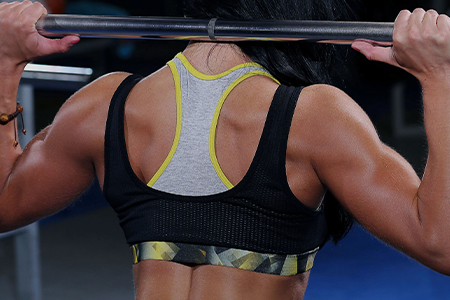Most women are aware that, when they lift weights, the situation is vastly different from when men do the same. For a variety of reasons; different body size and stature, bone strength, and internal biology, there are some things that men need to watch out for when they do heavy lifting, and similarly, women must also be cognisant of the differences. Here are a few ways that women can enjoy heavy lifting whilst minimising injury.
The first step, as with any exercise routine, is to warm up and ease in over time. OK, this sounds painfully obvious. But it is often ignored with painful results. Before any weight lifting, it’s important to spend enough time warming up so you don’t pull or tear a muscle. And if you’re on a journey to bulk up and gain muscle, do not suddenly charge in with an over zealous weight. You need to gradually work your way up; your muscles will need to slowly build and get used to the increased load. A 10-20% increase every 1-2 weeks is considered sensible.
Women also tend to have less load bearing ability across their shoulders than men, and recent studies have shown that women who regularly lift heavy weights tend to have less stability across their shoulder joints than women who lift no weights at all. It’s thought that this is because women focus on exercises where they stretch the elbows behind the body, overstretching the fronts of their joints. When your shoulders tighten it makes the problem worse. Think about your positioning and avoid overstretching the elbows more than two inches behind the body. This is a common mistake made when bench pressing, so take a second to think about it when lifting.
Balancing out the muscle groups is another crucial ‘must do’. When lifting weights, men and women alike will focus on one area of the body and neglect to balance out their reps. This has two major flaws; the first is that the risk of injury and fatigue is increased on the areas being worked, and the second is that the other areas of the body end up being underworked and weak. The way to fix this is to balance out ‘top to bottom’ and ‘front to back’. If you’re lifting with your arms on one session, make sure the next targets the legs, and vice versa.
For women, there is also another often overlooked injury; damage to the pelvic floor muscles. For women, the pelvic floor is weaker than with their male counterparts. We’ve all heard about awful injuries where someone has squatted, lifted and put too much weight on their mid section and strained the lower body; prolapses and dislocations of muscles are just some of the potential pitfalls of not lifting from the right pose and area. With women, the dangers of a prolapsed womb and damage to the pelvic floor are the main issues. The key, although it sounds overly simplistic, is to ensure you get proper training when lifting bar bells or any kind of dead lift.
The last tip is to avoid straining the shoulders and neck. In men, the increased testosterone means that this area is more bulky and muscular, with stronger tendons. In women, the neck and shoulders can still take weight, but in general, the upper body is weaker due to women having less strong bones and less muscle growth. Try and focus on lifting in a way that exercises the chest and back, then gradually start working your way up to your neck and shoulders with a light load to start with. Your mid-section will, by this point, be stronger and able to help cope with the heavy weights that are soon to be regularly lifted.

